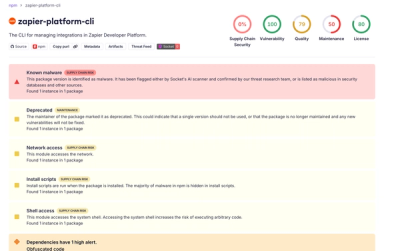Getting Started with Veramo React
Veramo React makes it easy to interact with multiple agents in React Applications.
Motivation
When using veramo in your front end React apps you may need to manage the state of multiple remote and local agents. Veramo React makes it easy to manage agents without needing to write or maintain boilerplate code. It also enables making new features available to front-end stacks without developers needing to implement them manually.
When you add an agent configuration it is persisted to local storage. A randomly generated ID is assigned to each agent.
Install and set up
yarn add @veramo-community/veramo-react
NOTE: Veramo React depends on @next versions of @veramo
Installation includes @veramo/core@next and @veramo/remote-client@next. You will NOT need to add additional @veramo dependencies to your app if you are just working with remote agents.
The following sippet is a simplified extract from Veramo Agent Explorer that uses React Query ontop of Veramo React to manage the data layer including caching and global data syncing.
import React from 'react'
import { BrowserRouter, Route } from 'react-router-dom'
import { VeramoProvider } from '@veramo-community/veramo-react'
import { QueryClientProvider, QueryClient } from 'react-query'
import { PageModuleProvider } from '../context/WidgetProvider'
import App from '../App'
const queryClient = new QueryClient()
export default = () => (
<QueryClientProvider client={queryClient}>
<VeramoProvider>
<BrowserRouter>
<Route component={App} />
</BrowserRouter>
</VeramoProvider>
</QueryClientProvider>
)
Create local agent
Create an agent in your app and export it. You will need to install additional dependencies
yarn add @veramo/did-resolver@next ethr-did-resolver did-resolver web-did-resolver
import { createAgent, IResolver } from '@veramo/core'
import { DIDResolverPlugin } from '@veramo/did-resolver'
import { Resolver } from 'did-resolver'
import { getResolver as ethrDidResolver } from 'ethr-did-resolver'
import { getResolver as webDidResolver } from 'web-did-resolver'
const INFURA_PROJECT_ID = '<your PROJECT_ID here>'
export const agent = createAgent<IResolver>({
plugins: [
new DIDResolverPlugin({
resolver: new Resolver({
...ethrDidResolver({
infuraProjectId: INFURA_PROJECT_ID
}),
...webDidResolver(),
}),
}),
],
})
In the provider setup above, add the following to bootstrap the local agent. You can also call addAgent to add while your application is running.
import {agent} from '../veramo'
<VeramoProvider agent={[agent]}>...<VeramoProvider>
useVeramo hook
The primary hook that provides the following API to your app. The below syntax uses React Query to fetch the data and uses the cache key of credentials + agentID to identify the data to your app.
import { useVeramo } from '@veramo-community/veramo-react'
import { useQuery } from 'react-query'
export default = () => {
const { agent } = useVeramo()
const { data } = useQuery(
['credentials', { agentId: agent?.context.id }],
() => agent?.dataStoreORMGetVerifiableCredentials())
return (
<div>
{
data.map((credential) => (
<div>{credential.issuer.id}</div>
)
}
<div>
)
}
If you are not using React Query you can just call agent?.dataStoreORMGetVerifiableCredentials() and manage the data like any async data source.
API
agent
The current active agent object. Call agent methods as normal:
agent[METHOD]
agents
A list of all configured agents.
activeAgentId
The ID of the currently active agent.
setActiveAgentId
Set the current active agent by ID
addAgent
Add a local agent. Create a local agent as per example in Create local agent section.
import { agent } from '../veramo'
import { useVeramo } from '@veramo-community/veramo-react'
const { addAgentConfig } = useVeramo()
const addLocalAgent = () => {
addAgent(agent)
}
removeAgent
Remove an agent by ID.
addAgentConfig
Add a remote agent configuration.
import { useVeramo } from '@veramo-community/veramo-react'
const { addAgentConfig } = useVeramo()
const newAgentConfig = () => {
addAgentConfig({
context: { name: 'Agent Name', schema: schemaUrl },
remoteAgents: [
{
url: agentUrl,
enabledMethods: Object.keys(schema['x-methods']),
token: apiKey,
},
],
})
}
updateAgentConfig
Update the configuration of an agent.
getAgentConfig
Get the current configuration for an agent.
getAgent
Get an agent by ID.
Local development
- Clone repo
- Build project ~
yarn build
- Link npm/yarn ~
yarn link
- Link to your project's react version
yarn link ../<PROJECT_NAME>/node_modules/react
In your react project run:
yarn link @veramo-community/veramo-reactcd node_modules/reactyarn link
Back in veramo-react



